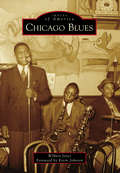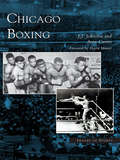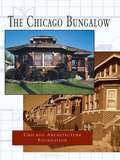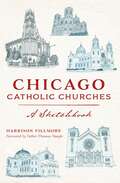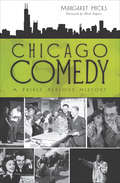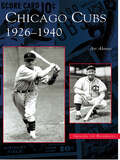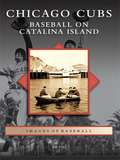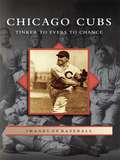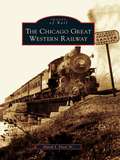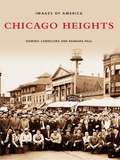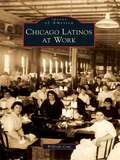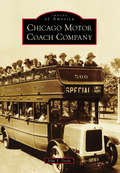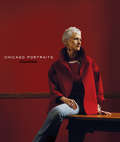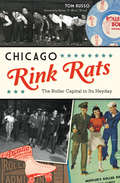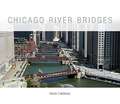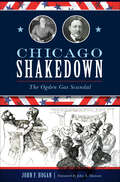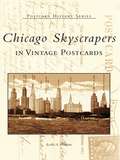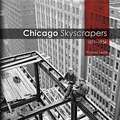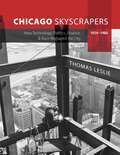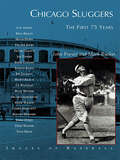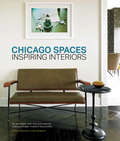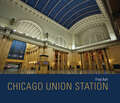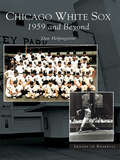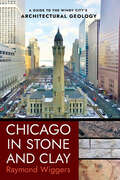- Table View
- List View
Chicago Blues
by Wilbert Jones Kevin JohnsonBlues was once described as the devil's music. It eventually became some of the most beloved American music that was embraced by a global audience. Originating in African American communities in the South in the late 1800s, it was inspired by gospel and spiritual music sung by field hands and sharecroppers who worked on plantations. During the Great Migration from the early 1900s to the mid-1970s, many African Americans moved north for a better quality of life. Chicago was one of America's leading industrialized cites, and manufacturing jobs were plentiful and provided better wages than sharecropping. Many blues musicians who worked as field hands and sharecroppers moved to Chicago not only for those jobs, but also to pursue their love of music. Greats such as Big Bill Broonzy, Tampa Red, Muddy Waters, Jimmy and Estelle Yancey, Robert Nighthawk, Elmore James, Willie Dixon, Earl Hooker, Koko Taylor, Sly Johnson, Buddy Guy, Howlin' Wolf, Eddie Burns, Zora Young, Junior Wells, and a host of others came with their own styles and gave birth to Chicago blues.
Chicago Boxing (Images of Sports)
by David Mamet Sean Curtin J. J. JohnstonProfessor Mike Donovan, Battling Nelson-"The Durable Dane," and "Stockyards" Harold Smith-- their stories are as colorful as their names. Chicago's boxing history is as exciting and unpredictable as any prize fight within the ring. Some of the most memorable bouts--great, infamous or otherwise--took place in the city's clubs, parks and arenas, and Chicago has seen its share of champions and top contenders over the years. The Gans-McGovern fight in 1900--the "Big Fix"--set the sport back 25 years in Chicago. The "Long Count" between Tunney and Dempsey, in 1927, may still be the most controversial bout of all time. Chicago Boxing is a story not only of great boxers, but of the fans who embraced them, the promoters who made them big, and even a few mob bosses who made good on their talent.
Chicago Bungalow, The
by Chicago Architecture FoundationThe Chicago Bungalow is more than a housing style indigenous to the city. It epitomizes Chicago's work ethic and its rewards for successive waves of ethnic newcomers to the city since the early 20th century. In this book, the Chicago Architecture Foundation interprets both the design and the meaning of these homes, in keeping with CAF's mission to raise awareness of Chicago's architectural legacy.After 1915, new neighborhoods appeared across the prairie. The Chicago-style bungalow came to both dominate and symbolize these areas. A one and one-half story single-family freestanding home, it included such conveniences as electricity, indoor plumbing, and central heat. Chicagoans built some 80,000 bungalows. Another 20,000 were built in suburban Cook County. Nearly every ethnic and racial group in the area has made its way at one time or another to the Bungalow Belt. Today the Bungalow Belt includes white ethnic, African American, Latino, and Asian families.
Chicago Catholic Churches: A Sketchbook (Landmarks)
by Harrison FillmoreIt began as the hobby of a lifelong Chicagoan. Twenty-five years and more than three hundred freehand church sketches later, it acts as an archive for centuries of architectural and religious history. The pen-and-ink drawings meticulously capture the details of each individual church down to the bullet holes Al Capone's hit men put in the façade of Holy Name Cathedral. The comprehensive collection also includes structures that were razed or repurposed, their memories lost save for the loyal parishioners who remember their roots. From St. Adalbert to St. Willibrord, Harrison Fillmore traces the unmistakable profiles of Chicago's Catholic churches into a single gallery of heartfelt art.
Chicago Comedy: A Fairly Serious History
by Margaret Hicks&“An overview of Chicago&’s comedic legacy, from its early days . . . to its present day position as a breeding ground for some of comedy&’s biggest names&” (Gapers Block). Famous for being a city of broad shoulders, Chicago has also developed an international reputation for split sides and slapped knees. Watch the Chicago style of comedy evolve from nineteenth-century vaudeville, through the rebellious comics of the fifties and into the improvisation and sketch that ushered in a new millennium. Drawing on material both hilarious and profound, Second City alum Margaret Hicks touches on what makes Chicago different from other cities and how that difference produced some of the greatest minds comedy will ever know: Amos &‘n&’ Andy, Jack Benny, Lenny Bruce, Del Close, John Belushi, Tina Fey, Stephen Colbert and so many, many more. Includes photos!
Chicago Cubs: 1926-1940 (Images of Baseball)
by Art AhrensThe Chicago Cubs of the mid-1920s through 1940 were one of the most talented and exciting ball clubs the city ever produced. The Northsiders enjoyed 14 consecutive winning seasons and claimed the National League pennant four times (1929, 1932, 1935, and 1938), but fell to a dominant American League club in each World Series appearance. Four legendary baseball names led these Cub teams during this amazing stretch. Three eventually landed in Cooperstown (McCarthy, Hornsby, Hartnett), and many believe the fourth (Grimm) should have joined them. This was also the era when Cubs Park was transformed into Wrigley Field, under the guidance of Bill Veeck Jr., with its trademark bricks and ivy, hand-operated scoreboard, and outfield bleachers.
Chicago Cubs: Baseball on Catalina Island (Images of Baseball)
by Jim VittiIt's not quite like today's spring training: one might find a rookie ballplayer (nicknamed Hack) uprooting trees with his bare hands or a future president of the United States getting into a barroom brawl with some grizzled sportswriters. The team was the Chicago Cubs, and the place was Santa Catalina Island-through the Roaring Twenties, Great Depression, and World War II. William Wrigley owned both island and ballclub; from 1921 to 1951, they came together. There were movie stars, like Betty Grable and Marilyn Monroe. There were grand steamships, big bands, hopes and dreams, and World Series rings. It's Chicago Cubs: Baseball on Catalina Island, and it's a trip like no other.
Chicago Cubs: Tinker to Evers to Chance (Images of Baseball)
by Art AhrensIt has been a long time. Joe Tinker, Johnny Evers, and Frank Chance--that "trio of bear cubs" immortalized in poem and enshrined as a unit in Cooperstown--formed the core of a ball club that brought Chicago baseball fans backtoback World Series championships 100 years ago. And fans are still waiting for victory number three. Chicago Cubs: Tinker to Evers to Chance brings the reader back to the notsohalcyon days of spitball pitchers, insidethepark home runs, and an era when raucous fans lined the foul lines, often a little too close for comfort for the visiting ballplayers. Beginning in 1898 with the acquisition of a green Frank Chance and following the team's exploits through the 1916 season, the last for Joe Tinker in a Cubs uniform, this is the story of Wrigleyville's favorite tenants, before there was a Wrigleyville.
Chicago Great Western Railway, The (Images of Rail)
by David J. Fiore Sr.The Chicago Great Western Railway (CGW) was a Midwestern line that operated in Illinois, Iowa, Missouri, Minnesota, Kansas, and Nebraska. Although this territory was served by much larger systems, the CGW was able to retain its share of passenger and freight business for 83 years through aggressive management, dedicated employees, innovations, and efficient operations. By the early 1960s, however, the growth of the trucking industry and airlines had taken away a substantial amount of the business previously handled by railroads. The CGW would not survive as operating costs increased while revenues declined. The only solution was to consolidate with another railroad, and a favorable agreement was reached with the Chicago and North Western Railway (C&NW). At 12:01 a.m. Monday, July 1, 1968, the CGW ceased to exist, as it became part of the C&NW. Since that time, much of the system has been abandoned, and today only a few segments of former CGW trackage remain in service. This book provides nostalgic images and photographs of the operations, employees, locomotives, and stations of a little railroad that is now only a memory.
Chicago Heights
by Barbara Paul Dominic CandeloroChicago Heights is a multicultural tableau, depicting the story of nineteenth-century pioneers and twentieth-century workers who built one of the most vibrant of the small, industrial cities of the Midwest. The exciting collection featured here is a result of an intensive city-wide campaign to identify the very best photographs of old Chicago Heights.About half came from the extensive collections of the Public Library and the Historical Society, while the rest were borrowed from local residents. This fascinating compilation features various past and present residents of Chicago Heights, a look at its diverse ethnic groups and religious denominations, and glimpses of old downtown buildings that no longer exist. The city's church groups, ethnic clubs, businesses, factories, and transportation facilities are all pictured here. Along with detailed captions, Chicago Heights offers the rare chance to experience the history of old Chicago Heights, bringing its exciting past alive again.
Chicago Latinos at Work (Images of America)
by Wilfredo CruzThe Latino community of Chicago is a rich ethnic tapestry, not a monolithic group. Latinos have had a presence in Chicago since the early 1900s and came seeking a better life for themselves and their children. As early as 1916, a sizable number of Mexicans settled in Chicago to plant roots and secure a foothold in the city's heavy industries. Puerto Ricans first came to the city in the late 1940s, their migration to the city peaking during the 1950s and 1960s. In subsequent decades, other Latino groups, like Cubans, Guatemalans, and Salvadorans, arrived and called Chicago their home. They too immigrated to Chicago seeking work. Since the 2000 U.S. census, there are now over one million Latinos in Chicago. Latinos undoubtedly shape the character of the city, including its politics, its neighborhoods, and its economy. Chicago Latinos at Work puts a face on the Latino worker in Chicago. It shows many of the jobs they have held in the past and continue to hold in the present.
Chicago Lawn/Marquette Manor (Images of America)
by Kathleen J. HeadleyThe Marquette Park area on the southwest side of Chicago is comprised of two neighborhoods- Chicago Lawn and Marquette Manor. This book depicts the evolution of both neighborhoods with photographs and images of the earliest developments, buildings, and families-some of which have been professionally reproduced from original glass slides-beginning in 1876 with the arrival of John F. Eberhart, the "Father of Chicago Lawn." Due focus is paid to the common denominator and centerpiece of both communities-Marquette Park. Beginning with early photographs of this popular 323-acre park and golf course, Chicago Lawn/Marquette Manor takes the reader through its grand beginnings as "the playground of the Southwest Side," and features activities throughout the years, including the racial strife it unfortunately acquired national notoriety for. The reader will have the opportunity to peek inside Amos Cravener's grocery store and H.E. Cain's pharmacy, c. 1900, as well as walk down 63rd Street when it was surrounded by prairie, watch as new buildings appear, and return when it is fully populated.
Chicago Motor Coach Company (Images of America)
by John F. DoyleChicago Motor Coach Company chronicles an era in Chicago when buses first traversed the city's park district boulevards, including the Magnificent Mile. Streetcars were not allowed on the boulevards; this situation paved the way for the first motor bus operation, Sheridan Road on the North Side, in 1917. By 1922, John D. Hertz would purchase the Sheridan Road line and secure franchises to operate over the boulevards on the South and West Sides. The Chicago Motor Coach Company was now born, along with the bus-building industry. From a Hertz plant in Chicago, it would become General Motors Truck and Coach Division at Pontiac, Michigan, the largest producer of transit buses in the world. In 1952, the Chicago Transit Authority (CTA) would purchase the Chicago Motor Coach Company.
Chicago Portraits
by Rick Kogan Chicago Tribune Staff Michael ZajakowskiThe Chicago Tribune possesses a vast photo archive spanning its more than 150 years in publication. From the Civil War era through today, its photographers have captured thousands of people, from everyday Chicagoans to visitors to the Second City to well-known artists, athletes, and politicians.For the first time, the best of these great photographic portraits are being collected in a large-format coffee-table edition. Chicago Portraits comprises the most memorable of the innumerable images that some of the greatest photographers in journalism have created over the past century. It's a unique showcase for the unsung photographers who've quietly documented daily life in Chicago, and through their decades of work created an unparalleled panorama of the City of Big Shoulders.Curated by the Tribune's photography directors and compiled in a beautiful sewn hardback edition, this will be an engrossing visual cross-section of Chicago life that will be pored over by readers young and old for years to come. Chicago Portraits is a fascinating and colorful look into the lives and legacies that make up this great American city.
Chicago Rink Rats: The Roller Capital in Its Heyday
by Tom Russo Darius "D-Breez" StroudBy 1950, roller skating had emerged as the number-one participatory sport in America. Ironically, the war years launched the Golden Age of Roller Skating. Soldiers serving overseas pleaded for skates along with their usual requests for cigarettes and letters from home. Stateside, skating uplifted morale and kept war factory workers exercising. By the end of the decade, five thousand rinks operated across the country. Its epicenter: Chicago! And no one was left behind! The Blink Bats, a group of Braille Center skaters, held their own at the huge Broadway Armory rink. Meanwhile, the Swank drew South Side crowds to its knee-action floor and stocked jukebox. Eighteen celebrated rinks are now gone, but rinks that remain honor the traditions of the sport's glory years. Author Tom Russo scoured newspaper archives and interviewed skaters of the roller capital's heyday to reveal the enduring legacy of Chicago's rink rats.
Chicago River Bridges
by Patrick T. McbriartyChicago River Bridgespresents the untold history and development of Chicago's iconic bridges, from the first wood footbridge built by a tavern owner in 1832 to the fantastic marvels of steel, concrete, and machinery of today. It is the story of Chicago as seen through its bridges, for it has been the bridges that proved critical in connecting and reconnecting the people, industry, and neighborhoods of a city that is constantly remaking itself. In this book, author Patrick T. McBriarty shows how generations of Chicagoans built (and rebuilt) the thriving city trisected by the Chicago River and linked by its many crossings. This comprehensive guidebook chronicles more than 175 bridges spanning 55 locations along the Main Channel, South Branch, and North Branch of the Chicago River. With new full-color photography of existing bridges and more than one hundred black and white images of bridges past, the book unearths the rich history of Chicago's downtown bridges from the Michigan Avenue Bridge to the often forgotten bridges that once connected thoroughfares such as Rush, Erie, Taylor, and Polk Streets. Throughout, McBriarty delivers new research into the bridges' architectural designs, engineering innovations, and their impact on Chicagoans' daily lives, explaining how the dominance of the "Chicago-style" bascule drawbridge influenced the style and mechanics of bridges worldwide. Interspersed throughout are the human dramas that played out on and around the bridges, such as the floods of 1849 and 1992, the cattle crossing collapse of the Rush Street Bridge, or Vincent "The Schemer" Drucci's Michigan Avenue Bridge jump. A confluence of Chicago history, urban design, and engineering lore, Chicago River Bridges illustrates Chicago's significant contribution to drawbridge innovation and the city's emergence as the drawbridge capital of the world.
Chicago Shakedown: The Ogden Gas Scandal
by John F. HoganThe Ogden Gas Affair represented the biggest political scandal of Chicago's first sixty years. Mayor John P. Hopkins and Democratic Party boss Roger Sullivan conspired with ten other insiders to form a dummy corporation to blackmail Peoples Gas Company. The scam poured money into the coffers of beneficiaries who were never prosecuted, including the governor of Illinois, John P. Altgeld. As their lengthy swindle ran its course, Hopkins and Sullivan rubbed elbows with the most notorious grafters of the robber baron era, including Charles Yerkes and "Big Bill" Thompson. Author John Hogan follows the money in a scheme that became a template for the enrichment of the connected at the expense of the citizenry.
Chicago Skyscrapers in Vintage Postcards (Postcard History Series)
by Leslie A. HudsonThe skyscraper has changed the face of urban architecture--and it all started in Chicago. Born out of the ashes of Chicago's Great Fire of 1871, the first skyscraper, the Home Insurance Building located at the northeast corner of LaSalle and Adams Streets, was completed in 1885. Designed by William Le Baron Jenney, the nine-story building had a metal load-carrying structural frame, the development of which led to steel-frame skeletal construction and the taller skyscrapers that would follow. Much has changed in skyscraper construction since 1885. But Chicago's impressive urban landscape has maintained its important place in architectural history and today boasts the tallest skyscraper in North America, at 110 stories.
Chicago Skyscrapers, 1871-1934
by Thomas LeslieFor more than a century, Chicago's skyline has included some of the world's most distinctive and inspiring buildings. This history of the Windy City's skyscrapers begins in the key period of reconstruction after the Great Fire of 1871 and concludes in 1934 with the onset of the Great Depression, which brought architectural progress to a standstill. During this time, such iconic landmarks as the Chicago Tribune Tower, the Wrigley Building, the Marshall Field and Company Building, the Chicago Stock Exchange, the Palmolive Building, the Masonic Temple, the City Opera, Merchandise Mart, and many others rose to impressive new heights, thanks to innovations in building methods and materials. Solid, earthbound edifices of iron, brick, and stone made way for towers of steel and plate glass, imparting a striking new look to Chicago's growing urban landscape. Thomas Leslie reveals the daily struggles, technical breakthroughs, and negotiations that produced these magnificent buildings. He also considers how the city's infamous political climate contributed to its architecture, as building and zoning codes were often disputed by shifting networks of rivals, labor unions, professional organizations, and municipal bodies. Featuring more than a hundred photographs and illustrations of the city's physically impressive and beautifully diverse architecture, Chicago Skyscrapers, 1871-1934 highlights an exceptionally dynamic, energetic period of architectural progress in Chicago.
Chicago Skyscrapers, 1934-1986: How Technology, Politics, Finance, and Race Reshaped the City
by Thomas LeslieFrom skyline-defining icons to wonders of the world, the second period of the Chicago skyscraper transformed the way Chicagoans lived and worked. Thomas Leslie’s comprehensive look at the modern skyscraper era views the skyscraper idea, and the buildings themselves, within the broad expanse of city history. As construction emerged from the Great Depression, structural, mechanical, and cladding innovations evolved while continuing to influence designs. But the truly radical changes concerned the motivations that drove construction. While profit remained key in the Loop, developers elsewhere in Chicago worked with a Daley political regime that saw tall buildings as tools for a wholesale recasting of the city’s appearance, demography, and economy. Focusing on both the wider cityscape and specific buildings, Leslie reveals skyscrapers to be the physical results of negotiations between motivating and mechanical causes. Illustrated with more than 140 photographs, Chicago Skyscrapers, 1934–1986 tells the fascinating stories of the people, ideas, negotiations, decision-making, compromises, and strategies that changed the history of architecture and one of its showcase cities.
Chicago Sluggers: The First 75 Years (Images of Baseball)
by Mark Rucker John FreyerThe Chicago White Stockings--later renamed the Cubs--won the inaugural National League Pennant in 1876 with a barrage of offensive numbers. Ross Barnes led the league at a .421 clip, and three other Chicago batters finished among the league's top five hitters. Even pitcher Al Spalding hit an impressive .312. Thus began the "northsiders" tradition of producing some of the major leagues' greatest sluggers--including "Cap" Anson, "Gabby" Hartnett, and "Hack" Wilson.The Chicago White Sox--still named the White Sox--won the inaugural American League Pennant in 1901, led by Fielder Jones' .311 average for a team built more around pitching than hitting--a team that won its first World Series title in 1906 with the nickname "The Hitless Wonders." But the "southsiders" also put up some lofty offensive numbers with the likes of Shoeless Joe Jackson and Eddie Collins.
Chicago Spaces
by Jan Parr Nate BerkusWith big names such as Nate Berkus and Alessandra Branca putting Chicago on the national design map, and with lesser-known (but no less talented) pros working their magic from the Gold Coast to the North Shore, Chicago teems with beautiful homes. This gorgeous coffee table book not only shows these dwellings in all their splendor but also tells the stories of how they came to be. Compiled by the editors of Chicago Home + Garden magazine, Chicago Spaces is divided into two parts. The first features homes in their entirety, while the second focuses on specific rooms: dining rooms, living rooms, bedrooms, kitchens, baths, dens, foyers, and children's rooms. Readers learn how these spaces came together and find tips for making changes in their own homes, as well as a directory of the area's best furniture and accessories shops. Chicago Spaces shows readers smart ways to turn their homes into comfortable, stylish oases.
Chicago Union Station (Railroads Past and Present)
by Fred AshA history of the Midwestern transportation hub and its impact on the city and the region, plus stunning photographs of the station’s architecture.More than a century before airlines placed it at the center of their systems, Chicago was already the nation’s transportation hub—from Union Station, passengers could reach major cities on the Atlantic, Pacific and Gulf coasts as well as countless points in between.Chicago’s history is tightly linked to its railroads. Railroad historian Fred Ash begins in the mid-1800s, when Chicago dominated Midwest trade and was referred to as the “Railroad Capital of the World.” During this period, swings in the political climate significantly modified the relationship between the local government and its largest landholders, the railroads. From here, Ash highlights competition at the turn of the twentieth century between railroad companies that greatly influenced Chicago’s urban landscape. Profiling the fascinating stories of businessmen, politicians, workers, and immigrants whose everyday lives were affected by the bustling transportation hub, Ash documents the impact Union Station had on the growing city and the entire Midwest.Featuring more than one hundred photographs of the famous beaux art architecture, Chicago Union Station is a beautifully illustrated tribute to one of America’s overlooked treasures.“The book includes more than 100 illustrations, a quarter of which are in color—but the real value is in author Ash’s narrative; he’s devoted decades to the study of terminals in the Railroad Capital, and it shows in this marvelous work.” —Classic Trains“The station’s history is thoughtfully revealed alongside concurrent economic and political events unfolding in Chicago at given points in time, thus providing the reader with a deeper understanding of why certain station milestones occurred when they did and the way they did.” —The Michigan Railfan
Chicago White Sox: 1959 and Beyond (Images of Baseball)
by Dan HelpingstineThe Chicago White Sox are a charter member of the American League. Through a little over a century of baseball, they have accumulated a history of triumphs, scandals, and heartbreaking setbacks. The photographs in this book come from the collections of Leo Labau, Mark Fletcher, and Gerry Bilek, three lifelong White Sox fans. The images show dramatic, emotional, and light moments that could only happen in a baseball game played on the south side of Chicago. In these pages you will find showmen Bill Veeck and Harry Carey, the 1959 World Series, sluggers like Allen, Melton, Zisk, Gamble, and Kittle, and great pitchers like Peters, Horlen, and Wood. There are no world championships in this story, just the great moments of a team that hasgiven its fans great memories.
Chicago in Stone and Clay: A Guide to the Windy City's Architectural Geology
by Raymond WiggersChicago in Stone and Clay explores the interplay between the city's most architecturally significant sites, the materials they're made of, and the sediments and bedrock they are anchored in. This unique geologist's survey of Windy City neighborhoods demonstrates the fascinating and often surprising links between science, art, engineering, and urban history. Drawing on two decades of experience leading popular geology tours in Chicago, Raymond Wiggers crafted this book for readers ranging from the region's large community of amateur naturalists, "citizen scientists," and architecture buffs to geologists, architects, educators, and other professionals seeking a new perspective on the themes of architecture and urbanism. Unlike most geology and architecture books, Chicago in Stone and Clay is written in the informal, accessible style of a natural history tour guide, humanizing the science for the nonspecialist reader. Providing an exciting new angle on both architecture and natural history, Wiggers uses an integrative approach that incorporates multiple themes and perspectives to demonstrate how the urban environment presents us with a rich geologic and architectural legacy.
